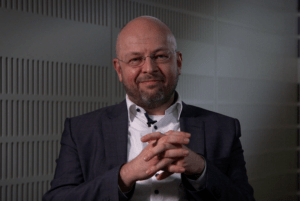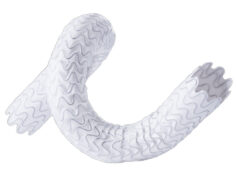 Living-donor kidney transplantation should be “treatment of choice” over deceased-donor transplantation, owing to it being the “most secure way to achieve pre-emptive kidney transplantation”. That is the view of a group of doctors writing in Frontiers in Public Health, who argue that, given ongoing shortages of donor kidneys, deceased-donor transplantation may be a suboptimal solution that is more difficult to time appropriately, often occurring too early or too late relative to the onset of end-stage kidney disease (ESKD).
Living-donor kidney transplantation should be “treatment of choice” over deceased-donor transplantation, owing to it being the “most secure way to achieve pre-emptive kidney transplantation”. That is the view of a group of doctors writing in Frontiers in Public Health, who argue that, given ongoing shortages of donor kidneys, deceased-donor transplantation may be a suboptimal solution that is more difficult to time appropriately, often occurring too early or too late relative to the onset of end-stage kidney disease (ESKD).
Living donor kidneys, the opinion piece’s authors argue, support improved outcomes as they frequently facilitate better graft survival rates due to their higher quality. They also benefit from “greater flexibility for transplantation” across blood type and immune system barriers, though the piece makes the case that the most important of all advantages to living donor donation is the ability to plan when transplantation will take place—which allows patients to crucially avoid dialysis and all its attendant “risks, complications and restrictions”.
These advantages have not been sufficient to raise the rates of pre-emptive living-donor kidney transplantation (PLDT) beyond “disappointing” levels, the authors add. This they ascribe to the fact that it is not used as a quality indicator for kidney transplantation in a majority of countries, making what they suggest is an unflattering contrast with fields such as oncology, where preferred treatment options are based more closely on the latest evidence—and incentivised through strict targets.
In seeking to explain the low rates of PLDKT, they sketch out a few barriers to its wider use. These include “late referral, lack of cohesion, lack of education” as well as failure to provide sufficient financial support and infrastructure. However, there are also “theoretical drawbacks” that may have contributed, including patients potentially facing the risks associated with surgery and immunosuppression earlier than necessary—though too early is better than too late, according to lead author Frank Dor (Hammersmith Hospital, London, UK). Patients may also be less inclined to adhere to a course of immunosuppressants without having first “experienced the morbidity of dialysis”, though this, the piece’s authors say, has been disproven as a significant driver.
The authors of the report draw next on data from the UK Renal Registry 24th Annual Report, which shows that only 17% of kidney replacement therapy starters are listed or receive living-donor transplantation before starting dialysis. In the period from April 2021 to March 2022, only 40% of kidneys received for transplantation were from living donors. This is lower than the rates in other European nations such as the Netherlands, where the authors note that in 2021 50% of kidney transplants came from living donors, of whom 44% were pre-emptive. The UK, they say, saw a median waiting time for chronic kidney disease (CKD) patients from start of dialysis to deceased-donor transplantation of 1044 days for adults who were transplanted between April 2021 and March 2022.
“There is substantial mortality on dialysis,” they argue, “in addition to a negative impact on employment, societal participation, and quality of life, dialysis also leads to considerable healthcare costs. Patients face a significant risk of suspension from the waiting list, with associated increased mortality and worse graft outcome.”
The guidance on PLDKT they describe as “limited”, with the UK-based National Institute for Health and Clinical Excellence only encouraging the inclusion of living donor transplantation “in the full informed discussion of options” faced by ESKD patients, with “pre-emptive living donor transplant… or pre-emptive listing for deceased donor transplantation to people considered eligible” sitting among a wider list of options. The authors of the Frontiers in Public Health piece, however, contend that such pre-emptive listing does not guarantee higher rates of pre-emptive transplantation. It is not only outcomes that they argue may be improved by an increase these rates—PLDKT is also a “cost-saving strategy” compared to non-pre-emptive transplantation. One study cited by the authors found cost-savings of US$94,579 over a 20-year period, while it also avoids the costs associated with dialysis, for which they cite estimates of £20,660–£31,785 per patient per year. Dialysis vintage prior to transplantation, they add, is shown to negatively impact graft survival, and is a major risk factor for kidney transplant outcomes.
“Decreasing the number of patients starting dialysis by virtue of undergoing pre-emptive transplantation will reduce the need for dialysis capacity, allowing resources to be reallocated elsewhere,” the authors assert. “Preventing the burden of having dialysis three times a week may enable patients to continue to work and contribute to society.”
The authors’ enthusiasm for living donor-donation is caveated by reference to the risks, “albeit very low”, of complication during surgery, as well as the effects of having only one kidney, on donors. They experience a heightened relative risk of ESKD, though the absolute risk remains small, the authors state. Additionally, they argue that it is important to consider the “thorough workup” and yearly follow-up with donors that make up part of what constitute “very clear guidelines”.
The authors stake out the conclusive claim that it is “our duty, not only for the individual ESKD patient, but also from a public health perspective” to institute PLDKT “as the default” treatment for the condition, while also re-emphasising the need to use it as a quality indicator.
Speaking to Renal Interventions, Dor added that “a pre-emptive living donor transplant plan also gives patients control back over their lives, especially during times of turbulence and extreme uncertainty of progressive kidney failure,” something he said remained undervalued.
“The benefits of PLDKT are massive,” he continued. “I don’t understand why this is not picked up on to a greater extent, and why dialysis is still set as the norm while a transplant from the deceased donor waiting list may or may not happen, and the happy few will have a living donor that will prevent them from having dialysis. Living donor kidney transplantation, especially pre-emptively, is not a luxury—it is the best option for people, but we are not collectively organising it in our current pathways. Time to change!”











